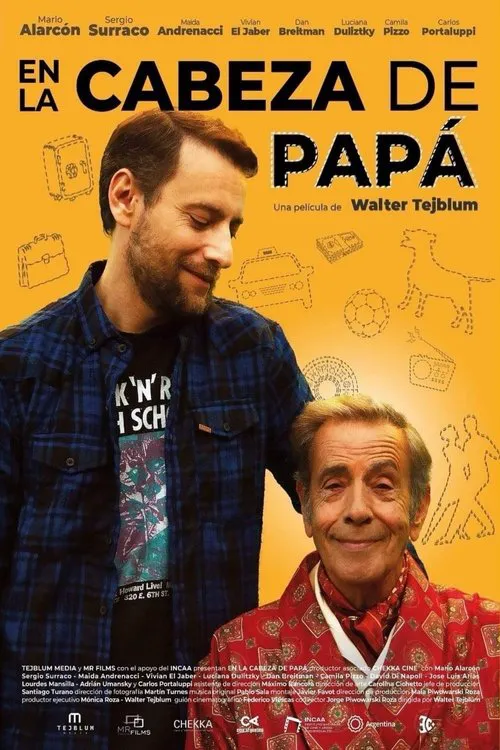En la cabeza de papá

Plot
En la cabeza de papá, a poignant Argentine drama directed by Gabriel Nesci, delves into the complex dynamics of family and identity, particularly in the face of significant change. The film follows Osvaldo, a man reaching a crossroads as he prepares to sell his childhood home, a decision that will have far-reaching consequences for himself and his loved ones. The movie begins with Osvaldo, a complex and sometimes gruff but ultimately loving father, living in the house where he grew up with his family. As he navigates the challenges of middle age, Osvaldo finds himself at a turning point, where he must confront the realities of adulthood and the impermanence of family ties. The weight of his father's past and the nostalgia that comes with it make the decision to sell the house feel like a betrayal to himself and his family. As Osvaldo navigates this difficult time, he is aided by his supportive wife, Laura, and their teenage children, Mateo and Leticia. Mateo, the eldest child, is a brooding young man struggling to find his place in the world, while Leticia, the more outgoing of the two, is desperate to hold onto the memories and traditions of their family home. The children's reactions to the potential sale of the house serve as a catalyst for Osvaldo's introspection, forcing him to confront his role as a father and the legacy he hopes to leave behind for his children. The house itself becomes a character in the film, a tangible representation of the family's history and the memories that have been etched into its walls. As Osvaldo begins to prepare the house for sale, the atmosphere becomes increasingly tense, with his children and wife resisting the change that threatens to erase the past. Through a series of poignant and often humorous moments, the family's conflicting desires and loyalties are brought to the surface, highlighting the tension between preserving tradition and embracing progress. One of the most striking aspects of En la cabeza de papá is its nuanced portrayal of Osvaldo as a flawed but ultimately loving father. Played with warmth and depth by the lead actor, Osvaldo's struggles to reconcile his own sense of identity with the need to let go of the past serve as a powerful metaphor for the universal human experience. As he grapples with the complexities of family dynamics and the impermanence of relationships, Osvaldo's character is brought to life through a series of tender and occasionally painful moments, which underscore the film's themes of identity, belonging, and the power of family ties. Throughout the film, Nesci's direction is marked by a sensitive and intuitive understanding of his characters, capturing the intricacies of family relationships and the emotional resonance of a beloved home. The cinematography, which captures the beauty and decay of the house, serves as a poignant reminder of the transience of life and the importance of cherishing memories. Ultimately, En la cabeza de papá is a heartwarming and thought-provoking exploration of what it means to be a family, both in times of joy and in times of change. Through its nuanced portrayal of Osvaldo and his loved ones, the film serves as a testament to the resilience of family ties and the enduring power of love to transcend even the most challenging circumstances. As the characters navigate the complexities of their relationships and the impermanence of their home, the film reminds us of the importance of holding onto the memories that make us who we are, even as we strive to create new ones and forge our own paths in life.
Reviews
Recommendations




